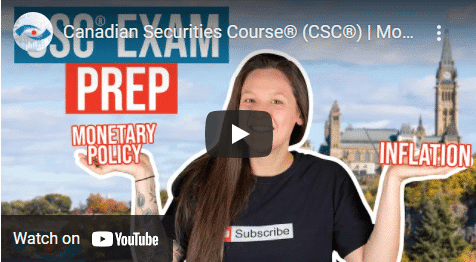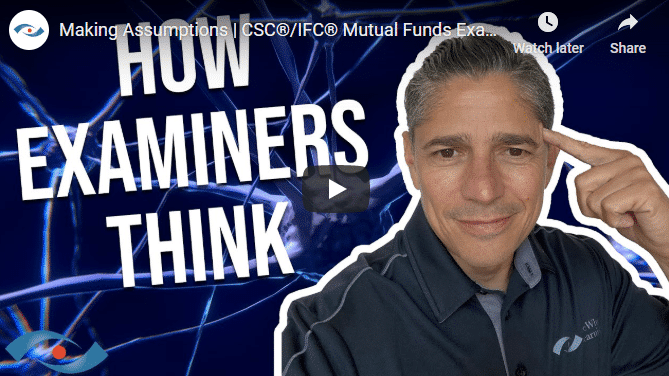You may have heard the saying, “Never assume, because it makes a ‘you know what’ out of you and me”. But the reality is that sometimes when you’re answering a multiple choice question, you need to make certain assumptions, and sometimes you don’t. So how do you know? We are going to talk about the art of making assumptions and in doing so, I’m going to let you into the mind of an examining body and how they think.
So how do examining bodies think? Well, whenever a new question is rolled out, they need to track the results from students and if way too many students are getting a question wrong, then it is either too hard or flawed in some way. If way too many students are getting the question right, it’s simply too easy.
So let’s just assume that the examining body wants between 60% and 70% of students to get the question right. After all, most students have done the work and are prepared. So if you are making an assumption, pretty much everybody needs to be making that same assumption. Otherwise, how are 60% to 70% of the students going to get the question right? Here’s what I do to hold myself accountable. Whenever I am making an assumption, I take an imaginary look around the room (I don’t want to be accused of cheating) and I ask myself, “Do I think everybody is making this assumption?”
If I do, I make it. But if I don’t, I simply don’t. This is so important because I can’t tell you how many times I’ve been running an exam prep seminar and I asked the group, “Has anybody come up with a different answer?” Then a student shouts out this really out-there assumption that they made, and it is usually the smartest guy in the room, but he thinks he’s outsmarting everybody. In reality, what he has done is thought himself out of a mark. So, when making an assumption, only do so if you’re really, really, confident that everybody is making the same assumption. With that in mind, let’s take look at a question. I have selected an easy one because the point of this video is not to teach you a concept, but to highlight why it is so important that you only make reasonable assumptions.
Arnold purchased an annuity within a registered plan. The annual income payment is $10,000 and Arnold is in a 40% marginal tax bracket. What would the tax implications be?
a) Arnold would owe $2,000 in taxes
b) Arnold would owe $4,000 in taxes
c) We would need to know the break down of principal and interest
d) There would be no tax implications because the plan is tax-sheltered.
We are going to need to make an assumption, but we may struggle with if the income payment is staying within the registered plan, or is it actually being paid out to Arnold? That would obviously impact the answer, and it really doesn’t say. A reasonable assumption is if you own an annuity which makes income payments within a registered plan, it is safe to assume that those payments are actually going to come out of the plan and go to Arnold and therefore those payments would be taxable. So, if that $10,000 actually came out of the registered plan it is like a withdrawal and the full amount would be subject to tax. We would simply take $10,000, multiply it by his 40% tax bracket and come up with an answer of $4,000
As you can see, this is a question where we need to make an assumption. I feel like I made a reasonable assumption and most people tackling this question would have made the same assumption. You’ll get lots of practice though, when you’re working with a SeeWhy Learning questions, because like I said, it really is an art.
Recent Videos

Monetary & Fiscal Policy Part 2

Monetary & Fiscal Policy






